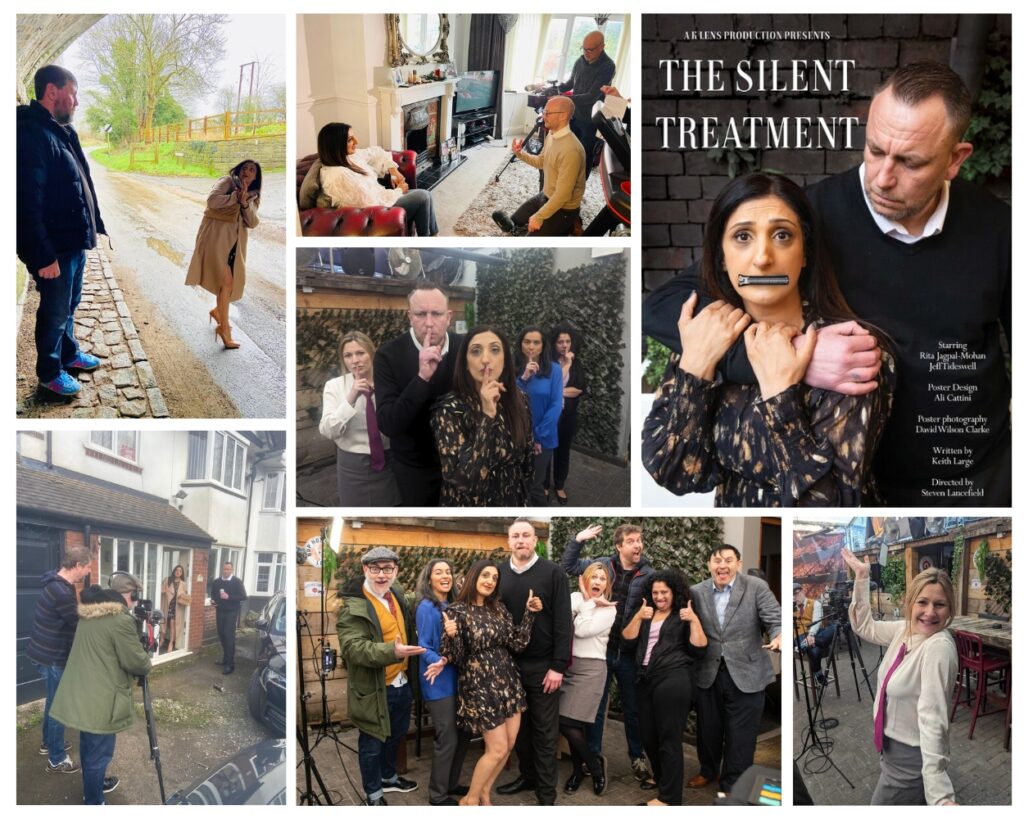Steven Lancefield
Director of
The Silent Treatment
A complete interview with Steven
We would like to express our sincere gratitude to director Steven for taking the time to answer our questions. Also special thanks goes to Keith Large, writer and producer.
Whole team of Liverpool Indie Awards is wishing you both the very best in all your future projects. We hope to see more of your exceptional work in the years to come. Thank you once again!
I was asked to direct “The Silent Treatment” by writer/producer Keith Large. Keith had created this compelling narrative which highlighted the poisonous nature of coercive control, and I was keen to bring his powerful story to life. You can always tell a great script when the visuals start popping into your head on the first read, and this was very much the case.
I suggested to Keith to strip the script of dialogue, so that the film literally strips the female protagonist of her voice. I worked closely with the actors so that the smallest of emotions would become very apparent, as it is a natural reaction to over emulate if you lose the power of dialogue. Luckily the wonderful cast all got this very quickly, and allowed the tale to breathe naturally. I also worked closely with our wonderful DOP Matt Holt to create a dynamism to scenes such as the climactic chase.
Keith as producer made my life very easy by prepping the locations and filming dates. So I then worked hard on creating a detailed shot list and production schedules, with final sign off from Keith. Keith’s excellent producing skills helped bond the production team, and actors and crew enjoyed socialising together after the shoot which helped us to bond. We were lucky with such an enthusiastic cast, who had a vested interest to bring the powerful story to life.
The weather during the climactic chase scene, with very wet conditions on a February day created some challenges! But this enabled the team to think “out of the box”, and some of the film’s most powerful images arose from the need to improvise.
I am really happy with the scenes filmed in the salon, which in real life is owned by our wonderful leading lady, Rita Jagpal-Mohan. I felt these scenes showcased the bond between our female characters including wonderful performances from Rita, Hari Flanagan and Roma Malik, only to be rudely interrupted by the villain of the piece, so naturally played by Jeff Tideswell.
There are moments in the edit where I feel we could have got some extra shots for coverage. But we had budget and time limitations, and the nature of shooting primarily outdoors mitigated this. I also learnt the importance of stills photography, as we were blessed with two talented crew members who captured some wonderful moments which helped with publicity.
I am very proud of “The Silent Treatment” and the message it gives about not living in fear from domestic violence and gaining help. I am also very happy with my latest short documentary “The Spirits of Penge” which is now on YouTube and starting the film festival rounds. It’s a very creepy real life investigation into a house haunted by multiple ghosts, and we captured some inexplicable and frightening paranormal activity. This film is presented by Sarah Coombes, who played the waitress so well in “The Silent Treatment”.
To just “go for it”! Pick up a camera and see what happens. And always road test a film with an audience before release, and take onboard their feedback before the final edit.
We decided not to overdo rehearse the actors, so that their performances were fresh and natural. I also played some music before filming some of the scenes, which helped set the tone. For me it was important that, although the film has upsetting content, that it was a happy set. I am so glad to say that all of the cast pitched in with every element of behind the scenes work too, from being interviewed by local BBC news to preparing props.
I am very lucky that my uncle, Ian Lancefield, is a talented composer! I gave him notes and timings and a selection of stills, and he created the wonderful and atmospheric sound track, which was so key as we had no dialogue. The natural sounds were excellently captured by Matt Holt on location.
Before sending the final film to Keith Large for sign off, I tested the film on my parents, Brian and Kari. They are, believe it or not, the most truthful of critics. My mother is Scandinavian and has a brilliant habit of “saying it how it is”, and she gave me various notes on the pace of the edit, which really helped. This came to the fore especially in the car chase scene, where it was identified we needed to speed up the footage of the car chase, and increase the pace.


